Introduction |
Afterlife Main Stream
The Art concept of "Hereafter Main Stream" consists of following nine abstract visual projects:
1- Afterlife Imagery,
2- The Spirit in Prison,
3- The Ethereal being,
4- The Eternal life ,
5- The Plane of Existance,
6- Beatific Vision,
7- On the Way to Hell (Last Judjment I),
8- On the way to Heaven (Last Judjment II),
9- The Apocatastastic und Annihilationistic Universal Space
1- Afterlife Imagery :
The afterlife (also referred to as life after death or the hereafter) is the idea that the consciousness or mind of a being continues after physical death occurs. In many popular views, this continued existence often takes place in a immaterial or spiritual realm. Major views on the afterlife derive from religion, esotericism and metaphysics.
The afterlife (also referred to as life after death, the Hereafter, the Next World, or the Other Side) is the belief that a part of, or essence of, or soul of an individual, which carries with it and confers personal identity, survives the death of the body of this world and this lifetime, by natural or supernatural means, in contrast to the belief in eternal oblivion after death. In some popular views, this continued existence often takes place in a spiritual realm, and in other popular views, the individual may be reborn into this world and begin the life cycle over again. In this latter view, such rebirths and deaths may take place over and over again continuously until the individual gains entry to a spiritual realm. Major views on the afterlife derive from religion, esotericism and metaphysics.
Some belief systems, such as those in the Abrahamic tradition, hold that the dead go to a specific plane of existence after death, as determined by a god, gods, or other divine judgment, based on their actions or beliefs during life. In contrast, in systems of reincarnation, such as those in the Dharmic tradition, the nature of the continued existence is also determined by the actions of the individual in the ended life but on an intrinsic basis of the individual rather than an external agent.
Deceased persons are usually believed to go to a specific plane of existence after death, typically believed to be determined by a God, based on their actions during physical life. In contrast, the term reincarnation refers to an afterlife in which only the "essence" of the being is preserved, and the "afterlife" is another life on Earth or possibly within the same universe.
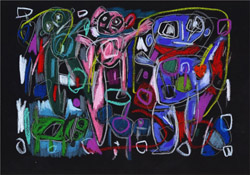 |
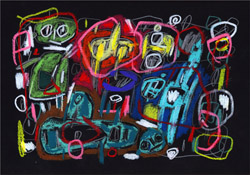 |
 |
||
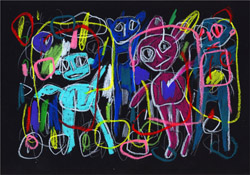 |
 |
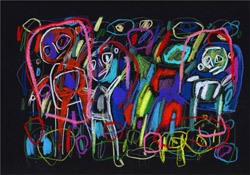 |
||
 |
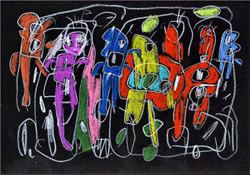 |
 |
Sample of concept : "afterlife main stream's" Visual Language
2- The Spirit in Prison
“The Spirit prison” is believed to be both a place and the state of the soul between death and the resurrection, for people who have either not yet received knowledge of the gospel of Jesus Christ, or those who have been taught but have rejected it. It is a temporary state within the spirit world, and is sometimes referred to in the scriptures as hell. The suffering associated with the spirit prison refers to anguish of soul because of acute knowledge of one's own sins and unclean state.
"The spirits in prison” is a place in the post-mortal spirit world for those who have "died in their sins, without a knowledge of the truth, or in transgression, having rejected the prophets". This is a temporary state in which spirits will be taught the Gospel and have the opportunity to repent and accept ordinances of salvation that are performed for them in temples. Those who accept the Gospel may dwell in paradise until the Resurrection. Those who choose not to repent but who are not sons of perdition will remain in spirit prison until the end of the Millennium, when they will be freed from hell and punishment and be resurrected to a telestial glory.
The spirits in prison is a recurrent minor subject in the writings of Christianity.
The subject takes its starting point from one obscure Bible reference:
1 Peter 3:19-20 "By which also he went and preached unto the spirits in prison; (20) Which sometime were disobedient, when once the longsuffering of God waited in the days of Noah, while the ark was a preparing, wherein few, that is, eight souls were saved by water." (KJV)3- The Ethereal being
Ethereal beings, according to some belief systems and occult theories, are mystic entities that usually are not made of ordinary matter. Despite the fact that they are believed to be essentially incorporeal, they do interact in physical shapes with the material universe and travel between the mystical and the everyday world. Given the lack of scientific evidence of their existence, science does not acknowledge them as factual, though paranormal researchers and psychics claim them as real.
Several belief systems include ethereal beings such as ghosts, mythological entities, nature spirits, angels, thoughtforms, jinns, and they are mentioned in religious, folkloristic, and magic texts. Since the 19th century, the existence of ethereal beings has been claimed by various spiritualist philosophies as well, and they are found in the popular imagination and represented in movies, TV series and cartoons.4- The Eternal life
The term eternal life traditionally refers to continued life after death, rather than immortality. While scholars such as John H. Leith assert that eternal life is never described in detail in the New Testament (though assurances are provided that the faithful will receive it), others such as D. A. Carson suggest that eternal life is explicitly defined in John 17:3, where Jesus says in his High Priestly Prayer, "Now this is eternal life: that they may know you, the only true God, and Jesus Christ, whom you have sent." Carson says of this verse that "Eternal life turns on nothing more and nothing less than knowledge of the true God" and that it is "not so much everlasting life as personal knowledge of the Everlasting One." The Eerdmans Dictionary of the Bible on the other hand, contends that "the nature of eternal life is only sketched in its essential elements in the New Testament".
While the Synoptic Gospels are seen as focusing on the proclamation of the Kingdom of God, some scholars see eternal life as the central theme of Jesus' preaching in the Gospel of John, where receiving eternal life is seen to be synonymous with entering the Kingdom. In Christian teachings, eternal life is not an inherent part of human existence, and is a unique gift from God, based on the model of the Resurrection of Jesus, viewed as a unique event through which death was conquered "once for all", permitting Christians to experience eternal life. This spiritual and eternal life is provided to believers, generally assumed to be at the resurrection of the dead.
The Johannine concept of eternal life differs from the synoptic view. Johannine writings specifically present the view of eternal life as not simply futuristic, but also pertaining to the present, so those who accept Christ can possess life "here and now" as well as in eternity, for they have "passed from death to life". Overall, the Bible balances the present and future with respect to eternal life: the believer has passed from death to eternal life, but this remains to be totally realized in the future.5- The Plane of Existance
In esoteric cosmology, a plane, other than the physical plane is conceived as a subtle state of consciousness that transcends the known physical universe.
The concept may be found in religious, and esoteric teachings - e.g. Vedanta (Advaita Vedanta), shamanism, Hermeticism, Neoplatonism, Gnosticism, Kashmir Shaivism, Sant Mat/Surat Shabd Yoga, Sufism, Druze, Kabbalah, Theosophy, Anthroposophy, Rosicrucianism (Esoteric Christian), Eckankar, Ascended Master Teachings, etc. - which propound the idea of a whole series of subtle planes or worlds or dimensions which, from a center, interpenetrate themselves and the physical planet in which we live, the solar systems, and all the physical structures of the universe. This interpenetration of planes culminates in the universe itself as a physical structured, dynamic and evolutive expression emanated through a series of steadily denser stages, becoming progressively more material and embodied.
The emanation is conceived, according to esoteric teachings, to have been originated, at the dawn of the universe's manifestation, in The Supreme Being Who sent out - from the unmanifested Absolute beyond comprehension - the dynamic force of creative energy, as sound-vibration ("the Word"), into the abyss of space. On the other hand, it states that this dynamic force is being sent forth, through the ages, framing all things that constitute and inhabit the universe.6- Beatific Visions
While humans' understanding of God while alive is indirect (mediation/prayer, not actually looking at Him), the beatific vision is direct (immediate, visual), or literally, seeing God. In other words, the beatific vision means a soul is actually looking at God, as is, viewing Him without any sort of censorship, like that depicted by the prophet. Furthermore, seeing God in Beatific vision does not take the viewer's life, as it would on earth.
Thomas Aquinas defined the beatific vision as the human being's "final end" in which one attains to a perfect happiness. Thomas reasons that one is perfectly happy only when all one's desires are perfectly satisfied, to the degree that happiness could not increase and could not be lost. "Man is not perfectly happy, so long as something remains for him to desire and seek."STh I–II, q., 3, a. 8. But this kind of perfect happiness cannot be found in any physical pleasure, any amount of worldly power, any degree of temporal fame or honor, or indeed in any finite reality. It can only be found in something that is infinite and perfect – and this is God. STh I–II, q. 2, a. 8. And since God is not a material thing but is pure spirit, we are united to God by knowing and loving him. Consequently, the most perfect union with God is the most perfect human happiness and the goal of the whole of the human life. But we cannot attain to this happiness by our own natural powers; it is a gift that must be given to us by God, who strengthens us by the "light of glory" so that we can see him as he is, without any intermediary. (Thomas quotes Psalm 35:10 on this point: "In your light we shall see light.")STh I, q. 12, a. 4. Further, since every created image or likeness of God (including even the most perfect "ideas" or "images" of God we might generate in our minds) is necessarily finite, it would thus be infinitely less than God himself.STh I, q. 12, a. 2. The only perfect and infinite good, therefore is God himself, which is why Aquinas argues that our perfect happiness and final end can only be the direct union with God himself and not with any created image of him. This union comes about by a kind of "seeing" perfectly the divine essence itself, a gift given to our intellects when God joins them directly to himself without any intermediary. And since in seeing this perfect vision of what (and who) God is, we grasp also his perfect goodness, this act of "seeing" is at the same time a perfect act of loving God as the highest and infinite goodness.
According to Aquinas, the Beatific Vision surpasses both faith and reason. Rational knowledge does not fully satisfy humankind's innate desire to know God, since reason is primarily concerned with sensible objects, and thus can only infer its conclusions about God indirectly. Summa Theologiae
The theological virtue of faith, too, is incomplete, since Aquinas thinks that it always implies some imperfection in the understanding. The believer does not wish to remain merely on the level of faith, but to grasp directly the object of faith, who is God himself. Summa Contra Gentiles
Thus only the fullness of the Beatific Vision satisfies this fundamental desire of the human soul to know God. Quoting St Paul, Aquinas notes "We see now in a glass darkly, but then face to face" (i Cor. 13:12). The Beatific Vision is the final reward for those saints elect by God to partake in and "enjoy the same happiness wherewith God is happy, seeing Him in the way which He sees Himself" in the next life. Summa Contra Gentiles7- On the Way to Hell (Last Judjment I)
The "Problem of Hell" is a possible ethical problem related to religions in which portrayals of Hell are ostensibly cruel, and are thus inconsistent with the concepts of a just, moral and omnibenevolent God.The problem of Hell revolves around four key points: it exists in the first place, some people go there, there is no escape, and it is punishment for actions or inactions done on Earth.
The concept that non-believers of a particular religion face damnation is called special salvation. The concept that all are saved regardless of belief is referred to as universal reconciliation. The minority Christian doctrine that sinners are destroyed rather than punished eternally is referred to as annihilationism.8- On the way to Heaven (Last Judjment II)
Heaven, the Heavens or Seven Heavens, is a common religious cosmological or metaphysical term for the physical or transcendent place from which heavenly beings (such as a Sky deity, God, angels, King or Queen of Heaven, Heavenly Father or Heavenly Mother, heavenly saints or venerated ancestors) originate, are enthroned or inhabit. It is commonly believed that heavenly beings can descend to earth or take on earthly flesh and that earthly beings can ascend to Heaven in the afterlife or in exceptional cases enter Heaven alive. Heaven is often described as a "higher place", the holiest place, a Paradise, in contrast to Hell or the Underworld or the "low places", and universally or conditionally accessible by earthly beings according to various standards of divinity, goodness, piety, faith, or other virtues or right beliefs or simply the Will of God. Some believe in the possibility of a Heaven on Earth in a World to Come.9- The Apocatastastic und Annihilationistic Universal Space
Apocatastastic or universal reconciliation (also called universal salvation, or in context simply universalism) is the doctrine that all sinful and alienated human souls—because of divine love and mercy—will ultimately be reconciled to God.
Universal salvation may be related to the perception of a problem of Hell, standing opposed to ideas such as endless conscious torment in Hell, but may also include a period of finite punishment similar to a state of purgatory. Believers in universal reconciliation may support the view that while there may be a real "Hell" of some kind, it is neither a place of endless suffering nor a place where the spirits of human beings are ultimately 'annihilated' after enduring the just amount of divine retribution. The concept of reconciliation is related to the concept of salvation—i.e., salvation from spiritual and eventually physical death—such that the term "universal salvation," is functionally equivalent.
An alternative to universal reconciliation is the doctrine of annihilationism, often in combination with Christian conditionalism.
Stravinskas identifies apocatastasis with universalism or universal reconciliation, and some of the older sources do so also. But most writers do not simply identify apocatastasis with universal reconciliation. González points out that a distinction exists, in that "it is possible to hold universalist views without believing that all of creation will return to its original state". And both Ludlow and McGarry state that the word apokatastasis is today usually understood as referring to one specific doctrine of universal salvation, not to all versions of universalism.
Annihilationism is an apart from salvation the death of human beings results in their total destruction (annihilation) rather than their everlasting torment. It is directly related to the doctrine of conditional immortality, the idea that a human soul is not immortal unless it is given eternal life. Annihilationism asserts that God will eventually destroy or annihilate the wicked, leaving only the righteous to live on in immortality. Some annihilationists believe the wicked will be punished for their sins in the Lake of Fire before being annihilated (e.g. Seventh-day Adventists), others that hell is a false doctrine of pagan origin. It stands in contrast to the traditional and long standing view of eternal torment, and the view that everyone will be saved (universal reconciliation or simply "universalism").Art Concept " Afterlife Main Stream" allrights reserved 2012 Nikrouz Kianouri
Art Concept text with help of www.wikipedia.com
Art Concept "Afterlife Main Stream " (C) reserved 2011 Nikrouz Kianouri
![]()
AA100000 Civilization © 1960-2060 Nikrouz Kianouri
